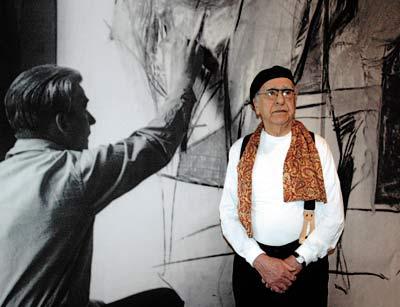Happy Birthday, Jackson Pollock
Happy Birthday, Jackson Pollock

Saturday will mark what would have been Jackson Pollock’s centennial birthday, and to inaugurate a year of events, the Pollock-Krasner House and Study Center in Springs will screen “Pollock” at the Springs Presbyterian Church on Saturday at 6 p.m.
The film stars Ed Harris, who also directed it, as Pollock and Marcia Gay Harden as his wife, Lee Krasner. Jennifer Connelly plays Ruth Kligman, Pollock’s mistress. Other interesting casting choices include Val Kilmer as Willem de Kooning, Jeffrey Tambor as Clement Greenberg, and Amy Madigan as Peggy Guggenheim. Ms. Harden won an Oscar for best supporting actress for her performance. The film contains a number of scenes shot in Springs.
Other Pollock events include an exhibit of his work at the Smithsonian’s American Art Museum in Washington, D.C. Called “Memories Arrested in Space,” it examines the artist’s legacy through family photographs, letters, writings, and scrapbooks from the personal papers of Pollock and Krasner. The show opens on Saturday and will be on view through May 15. Helen Harrison, the director of the Pollock-Krasner House, is the guest curator.
On April 25, a Stars of Stony Brook party will honor Mr. Harris and the Pollock-Krasner Foundation at Chelsea Piers in New York City. The proceeds will support the Pollock-Krasner House’s efforts to establish an endowment this year to further its programs and preservation.
In May, the house and study center will open “The Persistence of Pollock.” That show will be followed by “Men of Fire: Jose Clemente Orozco and Jackson Pollock” in August.
He will also be feted at ArtHamptons this year, with a day of events tied to the centennial, including a performance by Mike Bidlo of “Jack the Dripper at Peg’s Place.” J.L.







